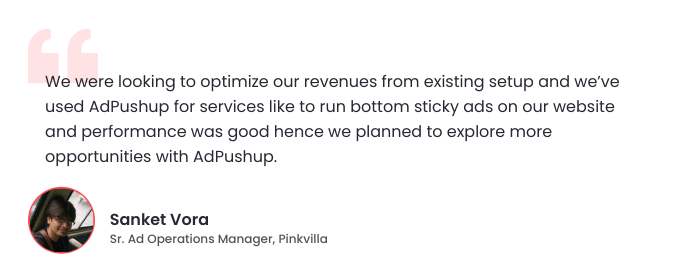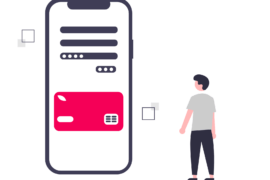You notice a sudden ad revenue drop. It’s like users don’t even exist.
Strange?
Is it a bug? It could be.
But another possibility is “Shadow Traffic.”
If you’re wondering about ways to prevent shadow traffic, we’ve got some practical solutions for countering your revenue loss.
In this blog post, we’ll talk about shadow traffic in the online advertising industry: what it is, which activities can cause shadow traffic, and how to deal with this problem.
Let’s dive right in…
What is shadow traffic?
Shadow traffic is real traffic from real web users. However, publishers don’t have any visibility on them or their actions because their data is not captured by the typical analytics software.
To get a better understanding of shadow traffic, you first need to learn how analytics tools work:
When a real visitor lands on a website, the analytics software quickly records the visit and sends an indication to the website owner. The information is sent in the form of codes (called ‘events’) which briefly describe a user’s activity on the site.
Some of the examples of these activities are page view events, ad clicks, video launches, or sign-ups for resources or guides.
If these events, for some reason, cannot be transmitted, then your analytics software will not register anything. There will be no record of page views, downloads, or sign-ups from a group of users.
Here’s an image that represents shadow traffic. Even with red X failed to reach the analytics tools. These failed events become a part of shadow traffic:
Case in point: When analytics events fail to reach the server, publishers miss out on significant data. The analytics software will not learn anything about some of your users and their behavior, despite them being real people.
This is what shadow traffic is – real traffic that fails to reach the analytics server.
Why is it important to address shadow traffic?
A parse.ly study found that more than 20% of all internet traffic is shadow traffic.
Missing out on this portion of visitor data may lead to misguided decisions, poor revenue, and bad business outcomes.
We all know that examining user data from various sources allows us to better understand our audience and strategize accordingly.
Hence, publishers should focus on improving data quality to address shadow traffic, while addressing user experience and privacy concerns.
Causes of shadow traffic:
Shadow traffic is mainly caused by:
- Ad blocking software
- User’s browser privacy settings
When ad blockers or browser privacy settings are put in place, events from a user’s device fail to reach the analytics tool, causing shadow traffic.
1. Ad blockers:
Ad blockers are software that prevent ads from appearing on websites. The most obvious reason that internet users use ad blockers is to eliminate ads from their browsing experience.
By removing ads, page load time decreases, and user experience also increases.
The rise of ad blockers is affecting publisher’s revenue. According to a PageFair and Adobe report, the adoption of ad blockers has increased from 21 million users in 2010 to more than 181 million users in 2020.
The same report also highlights that ad blockers have resulted in a revenue loss of over $40 billion for web publishers:
2. Browser privacy settings:
Apart from ad-blocking software, the privacy settings of browsers can also result in shadow traffic. Some of the examples are:
- Safari’s Intelligent Tracking Prevention
- Firefox’s Enhanced Tracking Prevention
- Microsoft Edge’s Tracking Protection
These built-in ad block features of known browsers further result in shadow traffic.
3. Privacy tools:
Few privacy tools used by internet users can also result in shadow block problems. For example:
- Network-level blocking tools:
This type of tool can block ads across the entire network, creating shadow traffic problems for publishers.
- VPN-level blocking tools:
VPN-level blocking tools such as NordVPN restrict publishers from tracking the behavior of internet users.
- Device DNS blocking tools:
Device DNS blocking tools block communication between browser and analytics software, causing significant revenue loss.
- Device App-based blocking tools:
They block ads from all apps that use browsers such as Safari for displaying web pages.
How to Recover Ad Revenue Lost to Ad Blocking
What Publishers Can Learn from Ad Blockers

Why do web users use ad blockers?
As the use of ad blockers is becoming ubiquitous, it’s important to learn what drives people to use them. Here are three major reasons visitors use ad blockers:
- To improve website UX:
Internet users are relying on ad blockers because they feel ads slow down their browser loading speed, resulting in poor UX.
Some types of ads such as image-rich banners, pop-ups, animated videos, and heavy amounts of ads often interrupt the UX of the page. Installing ad blockers prevents ads from loading on the page, resulting in a faster loading time.
- To avoid intimidating behavioral tracking:
Many ad networks take advantage of user data they have and sell them to a third party for cross-site behavioral tracking. Such practices are an infringement of privacy, and thus, users rightly install ad blockers in response.
- To prevent irrelevant ads:
A lot of internet users find ads invasive, annoying, and irrelevant. In fact, more than 10% of web users feel uncomfortable when they’re shown targeting ads based on their online activities and histories. Hence, they rely on ad blockers to prevent behavioral tracking.
9 Ways to Recover the Ad Revenue You’re Losing to Ad Blockers
How to Solve the Shadow Traffic Problem?
Shadow blocking can be solved if you use the right strategy and prioritize user experience over revenue generation.
Before you push your way to people’s wallets, make sure to offer a positive user experience that automatically attracts people to your business.
You can do this by:
- Avoiding placement of heavy ads
- Maintaining a good balance between the number of ads
- A/B testing best ad placements
- Improving page loading speed
- Staying GDPR compliant
These are general practices that will build trust with users and ensure a good user experience. But, you’d need to take some additional steps to minimize the impact of shadow blocking:
1. Server Logs
Whenever an internet user visits your site, they interact with your servers. These servers log user interactions and track them. So, the idea is to efficiently use the server logs to identify actual traffic.
However, it’s a complicated process. You’d need to put in a lot of hours to manage logs from different servers, sites, and CDNs.
2. First-Party Analytics Provider:
Publishers can use first-party vendors to access and track their visitor’s behavior and events. This approach allows them to track both the visible and shadow traffic alongside maintaining the user’s privacy.
3. Advanced analytics services
A great option would be using your analytics provider’s service in a manner that you get access to aggregate analytics without compromising the user’s privacy and confidentiality. This solution covers shadow traffic.
What Bloggers and Publishers Can Do to Fight Ad Blocking
5 Things Publishers Need to Know About Ad Blockers
In Closing:
Shadow traffic could negatively impact a publisher’s revenue. The tips shared above can prevent publishers from losing revenue.
Frequently Asked Questions:
Shadow traffic is real traffic from real people but publishers don’t have any visibility on them or their online behavior because data is not captured by the analytics software.
At least 20-40% of traffic remains untracked due to shadow traffic. Because of losing such a significant percentage of visitor data, publishers end up making lousy decisions, which impacts overall revenue.
Some of the common causes of shadow traffic are ad blocking software and browser privacy settings.

Shubham is a digital marketer with rich experience working in the advertisement technology industry. He has vast experience in the programmatic industry, driving business strategy and scaling functions including but not limited to growth and marketing, Operations, process optimization, and Sales.








